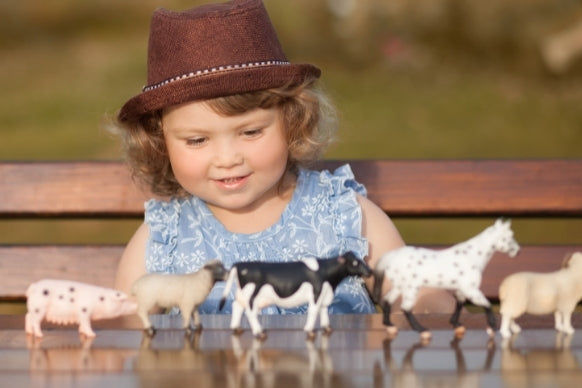
7 Activities For Playing With Kids Age 2-3 Years
Jun 19 , 2021
0 comments
3 minute read
Magic Bag

Find the same
Place 3 to 4 different objects in the bag: a cube, a doll, a toy car (depending on the child's interest). Show the child an object similar to the one in the bag, like a cube, and ask the child to find the same object, without looking, by touch. As soon as he finds the cube, the next object is shown to him, until he recognizes them all by touch.
Exercise encourages attention, tactile perception and the adoption of the term "same".
Recognizing Animals By Sound
Models or pictures of famous domestic animals are used for the game. You name the animal to the child and imitate its sound while playing with a model or showing a picture. You make the game more difficult by imitating the sound of a certain animal, and the child needs to name it or show the correct model / picture. When the child learns to recognize the animal by sound, switch roles.
The exercise encourages the development of cognitive experience, imitation, symbolic play and speech development.

Sorting
All known items from everyday use, shapes, toys are being sorted.
In 2 to 3 boxes you sort cubes, balls, cars, clips, animal toys, spoons, crayons.
Toys or objects can be sorted by size (large, small); by colour (2 to 3 colours); by shape (round, square, triangular objects). You can sort thumbnails of vehicles (flying, driving, sailing), animals, food, drinks, clothes.
The game becomes more interesting if you and your child search the house for objects of appropriate shapes.
The exercise encourages the development of cognitive experience, pre-mathematical skills (sense of depth, size, colour), visual and tactile perception as well as interest in objects and phenomena that surround us.

Connecting Pictures out of 2-4 parts
Cut out pictures of interesting objects or animals, paste them on cardboard and cut them into 2-4 parts. The child needs to put together the appropriate parts into pictures. When the game becomes interesting to him, the number of pieces increases (the first puzzle).
Exercise encourages the development of visual perception, oculomotor coordination as well as speech development.
Glue the Shape By Model
Cut out shapes from collage paper different in colour and size and help the child glue them onto the drawn model on paper (house, tree, train, boat).
The exercise encourages the development of visual perception, visuomotor construction, fine motor skills, manipulation of various materials.

Memory
If you do not have the original memory thumbnails, print pairs of the same images from the Internet or draw them and paste them on cardboard. Use 3 to 4 pairs of pictures to begin with, until the child shows interest in playing and understanding the rules. After that, the number of couples can increase, depending on the length of the child’s attention and his interests.
Exercise stimulates working memory, memory, intensity, length and range of attention.





